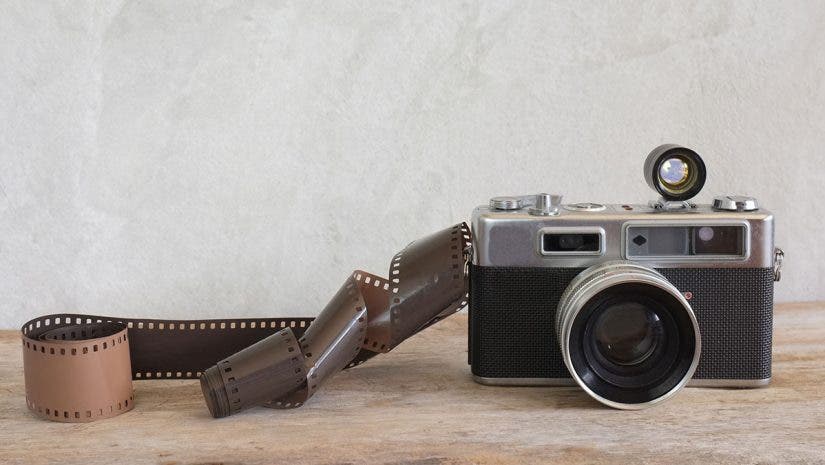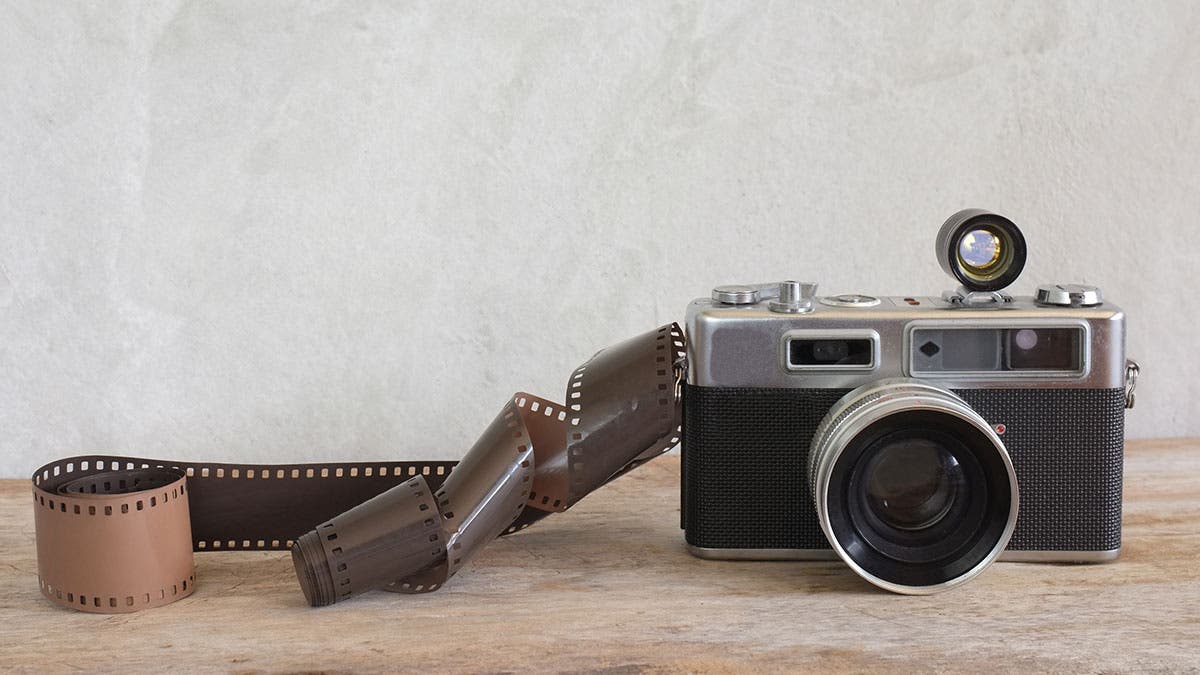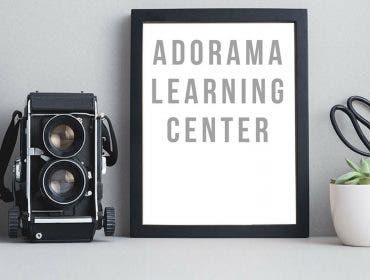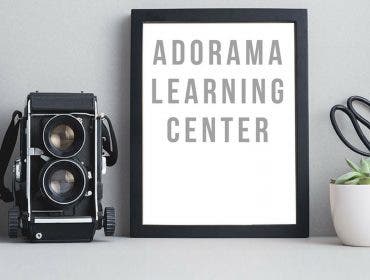Film cameras are down, but not out. You can still find a handful of new film cameras available that will help scratch your itch for doing it the old-fashioned way.
With digital cameras of all varieties dominating the market, now is a great time to buy a new film camera—but that time is running out. On one hand, prices for new models have moderated and there are many bargains to be found. On the other hand, there are fewer cameras to choose from. Used is a different story: the prices of used film cameras in excellent condition have generally plummeted to the point where the previously unaffordable pro or enthusiast 35mm SLR of your dreams may be available at an amazingly low price, and there’s a huge variety available. And many fine entry-level models can be purchased for as little as $100 or even less at Adorama’s Used Department.
There’s far less risk entailed in buying a guaranteed used camera from a reputable store rather than at an online auction.
One sign that film photography isn’t going anywhere is the resurgent popularity of toy cameras such as Lomos, Holgas, and Dianas. In fact, one indicator that the popularity of film is still high is that the Lomography web site has grown in recent years, with over a million visitors a month.
The number of new 35mm SLRs has dramatically decreased, and now there are only a handful left. Some, like the overstocked Minolta SLR listed below for $44, are amazing bargains. Others are expensive but offer something aficionados will pay extra for. One category I’ve eliminated is large-format. Alas, the day of the low-cost (read: under $1K) large format camera is over, and now the average price for a film large-format camera can range from $3,000 to over $10,000. Ugh. However, there are still bargains to be had among 35mm SLRs and rangefinder cameras, as well as medium format.
You will, of course, need film for these cameras. Adorama has plenty in stock. Visit the Adorama Film department and if you want to develop your own, you can get anything you want at the Film and Darkroom department.
Let’s take a look at the best bargain-priced film cameras available right now, and keep the safelight burning! Prices are accurate as of mid-July 2014.
Point and Shoot
Years ago there were hundreds of point-and-shoot film cameras. Now, it’s just a handful. Here are our favorites.

Instant photography has returned, thanks to Fujifilm. The latest Instax is the Fujifilm Mini 90 Neo ($149.95), a stylish, retro desgned camera with macro focusing and a built-in flash that produces sharable little 3.4×2.1-inch prints (image size is 2.4×1.8 inches). It has a mode dial that lets you select Party, Kids, Landscape, Double Exposure and other modes that optimize exposure for specific shooting situations. Purely a snapshooter camera, it’s a great tool for breaking the ice.

A 35mm film camera with a modest 38-115mm f/3.9-10.8 zoom lens, the Macromax Mac 10 Z3000 ($149.95) is a specialized tool designed primarily for macro photography. It focuses as close as 4-8 inches in Ultra Macro mode, and is DX coded to accomodate film from ISO 100-3200. If you plan on using this camera for macro, keep in mind that the aperture is small so you will need longer exposures, which means you would be wise to invest in a tripod.
35mm SLR
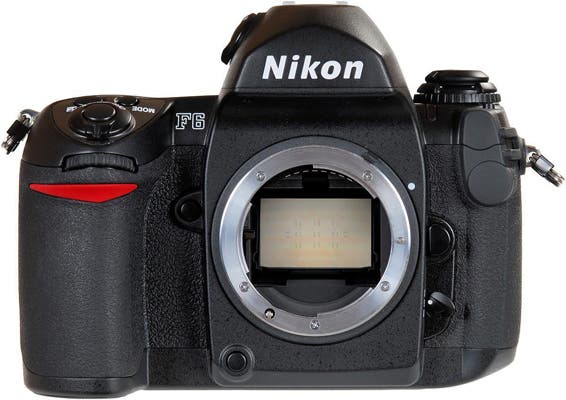
With the discontinuation of the Leica R8 and Canon EOS-1v, the Nikon F6 has the dubious distinction of being the world’s last high-end 35mm film SLR. The Nikon F6, at $2,449, is the last of the historic pro-oriented Nikon F line, and has an 11-area AF system, Nikon’s proprietary 3D Color Matrix Metering System, customizable function buttons, and 41 custom settings. With a magnesium alloy body the Nikon F6 will last long after the final film camera comes off the assembly line.

Nikon FM-10: The FM-10 represents the end of the line for Nikon film cameras. Nikon stopped producing film cameras three years ago, but there are still some FM-10’s available and when they’re gone, they’re gone. At only $319.950 (with a 35-70mm f/3.5-4.8 manual-focus lens) the FM-10 provides entrée into the entire Nikon system of Nikon F bayonet-mount lenses, Nikon Speedlight flashes, and accessories. Controls, as one would expect for a low-cost camera, are minimal, although the metering is center-weighted. It’s a great camera for serious students of photography who want to learn the basics.
35mm Rangefinder
 With the knowledge that the fabled, finely-engineered Leica MP is the $4,995, no-compromise last rangefinder camera standing, let’s look at some 35mm rangefinder cameras that are more affordable to the average photo buff. Only one company, Voigtlander (Cosina), offers less expensive alternatives.
With the knowledge that the fabled, finely-engineered Leica MP is the $4,995, no-compromise last rangefinder camera standing, let’s look at some 35mm rangefinder cameras that are more affordable to the average photo buff. Only one company, Voigtlander (Cosina), offers less expensive alternatives.
 Voigtlander Bessa R3M: The Bessa R3M ($669 at Adorama) distinguishes itself with a bright 1:1 viewfinder, and a mechanical shutter release. White it offers TTL centerweighted light metering with a working battery, the camera will still operate (without the meter) if the battery is dead. Like the other rangefinders, the R3M has an M-type Bayonet mount and will accept all Leica rangefinder lenses, as well as Voigtlander M-mount lenses, which are no slouches, optically. But at $669, the Bessa R3M costs roughly a tenth the price of a Leica M7. There are five other Voigtlander Bessa 35mm models to choose from at Adorama with minor variations ranging from $669-$799.
Voigtlander Bessa R3M: The Bessa R3M ($669 at Adorama) distinguishes itself with a bright 1:1 viewfinder, and a mechanical shutter release. White it offers TTL centerweighted light metering with a working battery, the camera will still operate (without the meter) if the battery is dead. Like the other rangefinders, the R3M has an M-type Bayonet mount and will accept all Leica rangefinder lenses, as well as Voigtlander M-mount lenses, which are no slouches, optically. But at $669, the Bessa R3M costs roughly a tenth the price of a Leica M7. There are five other Voigtlander Bessa 35mm models to choose from at Adorama with minor variations ranging from $669-$799.
Medium Format

While digital—especially full 35mm-frame DSLRs—is making serious inroads here, there is still a stalwart group that swears by high-end film Medium Format high-end SLRs such as the Mamiya RZ670 Pro IID (roughly $3,823) Bless ‘em—and if you can afford this workhorse or a used Hasselblad, they are an excellent investment that will deliver mind-blowing image quality. But you can still learn a lot and have a blast with some lower-priced medium-format cameras, and the company that’s owned that market for several years now is Lomography.

Lomography, best known for its deliberately “crappy” toy cameras, basically owns the low-cost medium-format film category—and some of those cameras aren’t crappy at all. First up, Lomography has lovingly recreated the Soviet-era Lubitel, which is currently the only newly-minted film twin-lens reflex camera available. This model shoots both medium-format 120 film as well as 35mm, and unlike so many Lomos, the plastic-bodied Lubitel 166+ ($289.99) uses better quality glass for sharp results. All settings are manual, and as Lomo puts it, the results are “more professional than any 35mm camera but less professional than a Hasselblad.”
 The second of Lomo’s “serious” medium-format cameras is the $237.29 Lomography Belair X, a fold-out camera with an historic air to it, introduced earlier this year. A medium-format camera with a bellows that folds into the camera body, the Belair hearkens back to the pre-35mm days of fold-out cameras. The camera has three picture formats including 6×12, 6×9 and 6×6 on 120 roll film, and has aperture-priority autoexposure. Its top shutter speed is 1/125 second, and the camera supports ISO 50-1600 film. The camera ships with two lenses—a 90mm “normal” lens and a 58mm wide-angle. This is a fun camera that will get people doing double-takes as you shoot!
The second of Lomo’s “serious” medium-format cameras is the $237.29 Lomography Belair X, a fold-out camera with an historic air to it, introduced earlier this year. A medium-format camera with a bellows that folds into the camera body, the Belair hearkens back to the pre-35mm days of fold-out cameras. The camera has three picture formats including 6×12, 6×9 and 6×6 on 120 roll film, and has aperture-priority autoexposure. Its top shutter speed is 1/125 second, and the camera supports ISO 50-1600 film. The camera ships with two lenses—a 90mm “normal” lens and a 58mm wide-angle. This is a fun camera that will get people doing double-takes as you shoot!
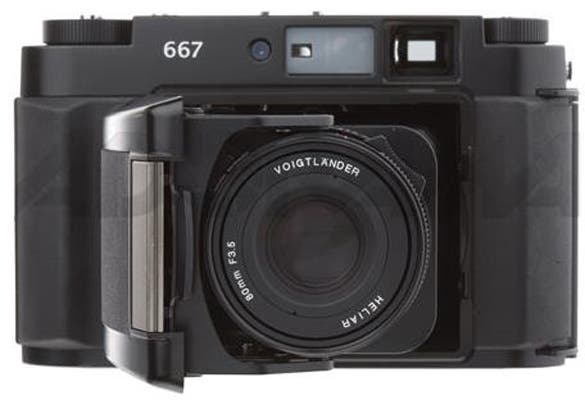
The Voigtlander Bessa 667 III ($2,250.00) is a pro-quality dual-format camera that shoots square and 6x7cm rectangular images by adjusting switch between rolls. Using a design inspired by classic folding bellows cameras from a century ago, the camera has an 80mm f/3.5, which covers a 57 (rectangular) or 53 (square) degree angle of view. Shutter speed is set manually and ranges from 4 seconds and Bulb to 1/500 second. The camera takes 120 or 220 film.
Don’t see the right film camera here? Check out the Adorama Used department for great deals on a wide variety of film-era cameras and lenses.
